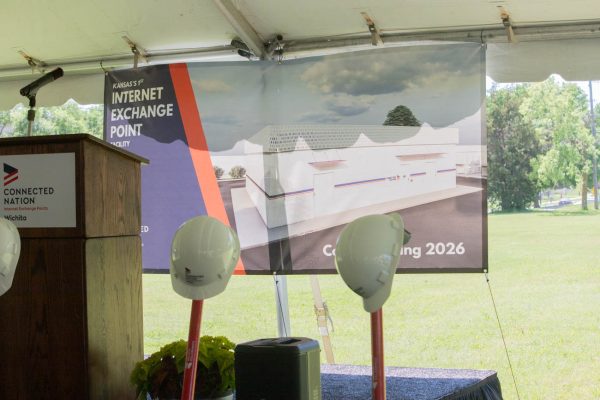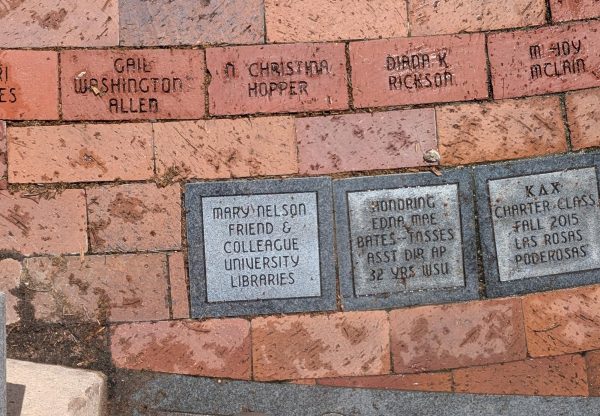Here’s what experts say about this week’s earthquakes
Earthquakes in Kansas are not a new phenomenon, but they are becoming more prevalent, especially in the Wichita Area. Prior to Dec. 8 2020 most of the earthquakes felt in Kansas were from wastewater injection in Southern Kansas and Northern Oklahoma wells.
This week multiple earthquakes have occurred in the Wichita area.
Although the idea of an earthquake is unsettling, William Parcell, WSU’s Geology Department Chair, said that damage is unlikely to occur at the magnitude of earthquakes that Kansas is currently seeing. He stated that with the current magnitude of earthquakes Kansas is feeling, damage is not necessarily happening, however cracks in walls are possible.
“Having [earthquakes] around is concerning, but you’d start to be concerned about actual structural damage… we’d start to see around 4.0 or 5.0,” said Parcell. “We have had earthquakes in the same area going back a hundred years, so this is not necessarily new, It feels new.”
Although we likely will not know the exact cause of Wichita’s earthquakes, Parcell believes that because of the amount of wastewater injected into Southern Kansas and Northern Oklahoma wells, it is likely that this is the cause for the recent earthquakes.
“What we do know is that from Wichita going North East towards Kansas City and up into Iowa, there is a large buried fault system throughout there,” Parcell said.
Parcell said that over time, the water injected into these wells has spread underground and is now disrupting faults that run close to Sedgwick County.
“There were studies in the past couple of years that showed that those injection wells down in Northern Oklahoma and Southern Kansas, that the water they injected didn’t stay put, it started to move out along these deep layers underground,” Parcell said. “As it moves out, it changes the pressure in other places, and it is possible that it may be connected.”
For students interested in learning more about earthquakes and geology, Parcell recommends any of the introductory level geology classes offered by the department, and for those interested in looking at how many earthquakes occur on a daily basis the Kansas Geological Survey and USGS each have maps detailing where and when earthquakes occur, and the magnitude and depth of these earthquakes.














Bryan • May 3, 2022 at 4:42 am
Hi everyone, after 10 years of playing lotto game i am finally living my dream life, all thanks to Dr Aluya i will never forget that great man never in my entire life, i am who i am today all because of him he gave me a winning numbers to play and he prepared a lotto winning spell for me that helped me won the powerball jackpot. friend and I stopped at the party store that day to buy some Lottery, I bought a couple scratch offs and decided to get one Mega Millions ticket and one Powerball ticket, too.
I was at work the next morning when my friend FaceTimed me and asked me if I had checked my ticket because the news was saying the winning ticket was bought at the Huron Plaza Liquor.
I got off the phone and went to my truck to get the ticket. After I checked it, all could do was scream. Everyone from work came running to check on me. Once I got calmed down, my boss made sure I was able to get a ride home because there was no way I would be able to drive after learning I was a multi-millionaire. thank you so much Dr Aluya for what you have done for my entire generations, i will forever be grateful.
if you want to win it big you can reach out to him on his info:
Email: [email protected]
Joan christopher • Feb 6, 2022 at 12:51 pm
A few months ago, I felt so depressed, I got frustrated with bad credits, but then I contacted HACK VANISH by phone: +1 (747) 293-8514 and email: HACK VANISH (@) GMAIL. COM. I found out about hack vanish services through positive reviews read on some credit blogs, in a blink of an eye this great hacker restored my credit score from 509 to 784 in all 3 major credit bureaus, they got removed evictions and foreclosures, my LexisNexis and Chex system was repaired respectively, a few days later I received an email confirming the approval of my mortgage loan, it was quite surprising because I never thought it was possible. Today, I can confidently say that 2021 was a banner year for my husband and I as we now own a new house and a new SUV courtesy of HACK VANISH, I would definitely recommend him to anyone in need of a genuine Hacker.